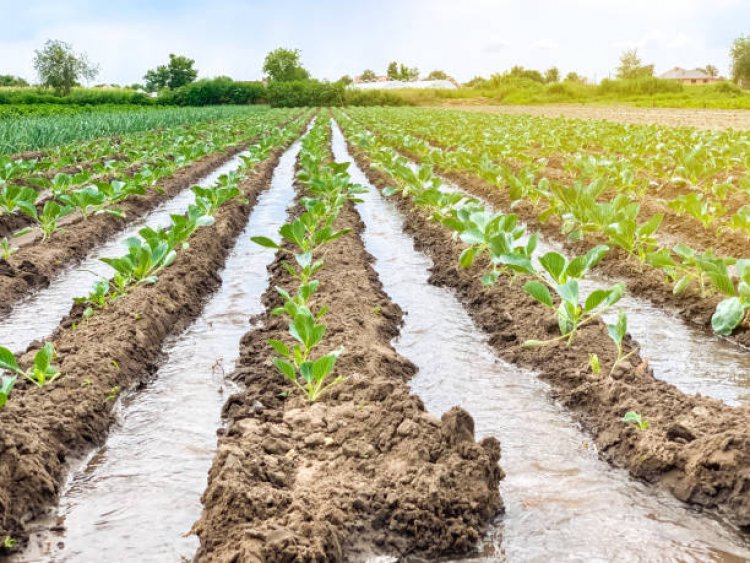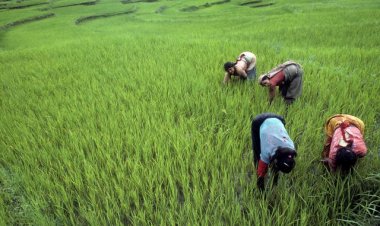Exploring the traditional irrigation systems of Nepal: A glimpse into ancient engineering techniques
Discover the unique and diverse traditional irrigation systems found in Nepal, from terrace farming in the hilly regions to canal irrigation in the Chitwan and Kaski districts. Learn about the history and evolution of these ancient engineering techniques and their impact on local communities and agriculture.

Nepal, a landlocked country located in South Asia, has a rich history of ancient engineering techniques, particularly in the field of irrigation. Irrigation systems have been an integral part of Nepal's agriculture for centuries, providing water to crops in the dry and arid regions of the country. The traditional irrigation systems of Nepal are not only a glimpse into the country's past but also a vital aspect of the present. They have played a crucial role in the development of agriculture and the livelihoods of local communities. This article will explore the history and evolution of traditional irrigation systems in Nepal, the various types of systems found in different regions of the country, and their impact on local communities and agriculture.
History and Evolution of Traditional Irrigation Systems in Nepal
- Irrigation systems in Nepal can be traced back to the Lichchhavi period (400–750 AD), where terrace farming and water management systems were used to cultivate crops.
- During the Malla period (1200–1768 AD), the construction of stone spouts and canals was developed for irrigation purposes.
- The Rana period (1846–1951) saw a shift towards the use of modern irrigation systems, but traditional systems were still widely used.
- Today, traditional irrigation systems continue to be used in Nepal, particularly in rural and remote areas where modern systems are not feasible or accessible.
List of various types of traditional irrigation systems found in different regions of Nepal
-
Terrace farming
This method involves the construction of terraces on hillsides to retain water and prevent soil erosion. This type of irrigation system is commonly found in the hilly regions of Nepal. -
Sunken pond irrigation
This system uses a pond dug into the ground to store water and is typically found in the Terai region of Nepal. -
Canal irrigation
This method involves the construction of canals to channel water from rivers or streams to crops. This type of system is widely used in the Chitwan and Kaski districts of Nepal. -
Stone spout irrigation
This system involves the use of stone spouts to channel water from rivers or streams to crops. This type of system is commonly found in the Kathmandu Valley and the Mustang district of Nepal. -
Floodwater irrigation
This system involves the use of floodwaters from rivers or streams to irrigate crops. This type of system is commonly found in the Terai region of Nepal, particularly in the low-lying areas near major rivers. -
Rope and bucket irrigation
This system involves the use of a rope and bucket to manually lift water from a nearby source and transport it to crops. This type of system is commonly found in the mountainous regions of Nepal, where access to water is limited. -
Dug-well irrigation
This system involves the use of wells dug into the ground to access underground water sources for irrigation. This type of system is commonly found in the Terai region of Nepal, particularly in areas with high water tables. -
Piped irrigation
This system involves the use of pipes to channel water from rivers or streams to crops. This type of system is commonly found in the Kathmandu Valley and the Pokhara region of Nepal.
Impact of Traditional Irrigation Systems on Local Communities and Agriculture
- Traditional irrigation systems have played a vital role in the development of agriculture in Nepal, particularly in dry and arid regions where water is scarce.
- These systems have provided a reliable source of water for crops, leading to increased crop yields and food security for local communities.
- Traditional irrigation systems have also created job opportunities in the fields of construction and maintenance.
- They have also helped to preserve the natural environment by preventing soil erosion and promoting water conservation.
- However, traditional irrigation systems are often labor-intensive and require constant maintenance to function effectively.
- Also, the traditional irrigation systems are not capable of handling heavy rainfall and floods, which results in damage to the crops and infrastructure.
Traditional irrigation systems in Nepal are a testament to the country's rich history of ancient engineering techniques. These systems have played a crucial role in the development of agriculture and the livelihoods of local communities. The various types of systems found in different regions of the country demonstrate the ingenuity of Nepal's ancestors in developing water management systems to suit their specific needs and environments. Although traditional irrigation systems are still in use today, they are often not as efficient as modern systems. However, it is important to recognize the valuable contributions of traditional irrigation systems in the country's history and to preserve them for future generations. It is also important to upgrade these traditional systems to adapt to the changing climate and weather conditions.
What's Your Reaction?







































































































